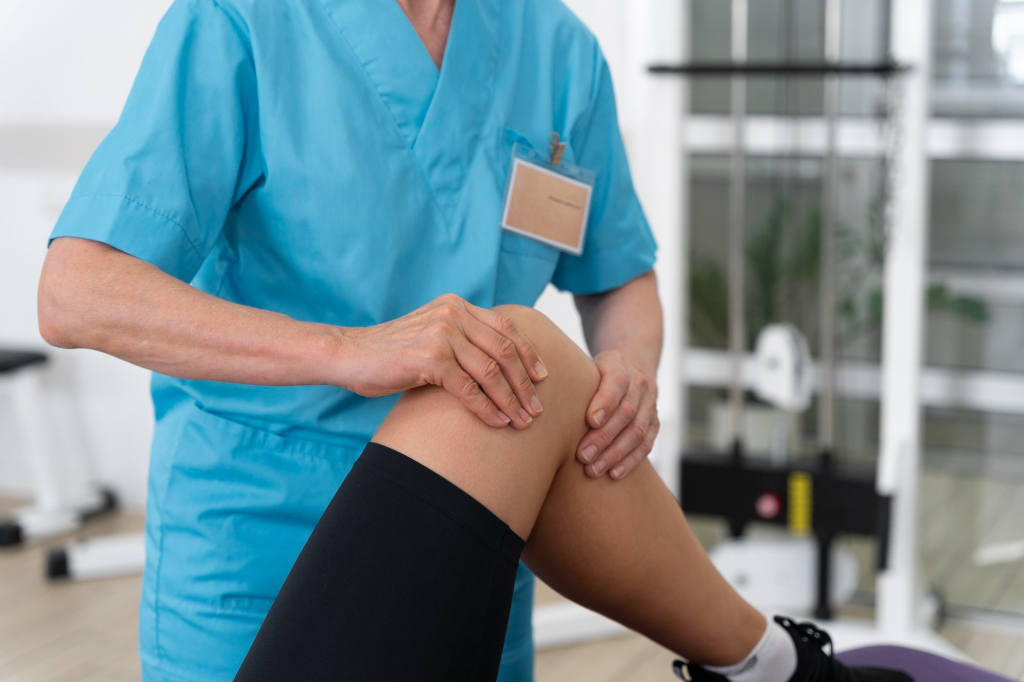
A total knee replacement is a life-changing procedure for those suffering from severe knee pain due to arthritis or injury. While the immediate benefits, such as pain relief and improved mobility, are significant, understanding the long-term outcomes and necessary maintenance is crucial for achieving the best results.
This post will explore what patients can expect after TKR knee replacement, the long-term outcomes, and maintenance strategies required to keep the knee joint functioning optimally.
What to Expect After TKR Knee Replacement
After undergoing total knee replacement, it is important to understand the recovery process and what you can expect in the weeks and months that follow.
Typical Recovery Timeline
After TKR knee replacement, patients typically follow a recovery process in stages. The first few weeks focus on pain management and reducing swelling, with physical therapy beginning soon after. This helps regain mobility and strength. As time progresses, patients shift towards long-term maintenance, gradually transitioning from intensive rehabilitation to a routine of exercises designed to maintain knee function.
Long-Term Outcomes of TKR Knee Replacement
After the initial recovery phase, it’s important to understand the long-term impacts and results of the total knee replacement.
Implant Longevity and Durability
One of the most common concerns after total knee replacement is the longevity of the implant. On average, the knee implant can last 15 to 20 years. Several factors influence the lifespan of the implant, such as the patient’s weight, activity level, and adherence to care instructions. Low-impact activities, like walking and swimming, can help preserve the implant, while high-impact sports should be avoided to reduce stress on the knee.
Functional Improvements Over Time
Patients often experience continued improvements in knee function in the years following surgery. Many individuals regain a full range of motion and can resume activities such as cycling and swimming, which can positively impact their quality of life. The ability to move more freely and without pain significantly enhances overall well-being, making it easier to perform everyday tasks.
Risks and Potential Complications
Although total knee replacement has a high success rate, risks such as implant loosening, wear, infection, or persistent pain can still arise. Implant loosening is more likely in patients who engage in high-impact activities. If problems arise, early intervention is crucial to avoid more serious complications and may involve revision surgery.
Maintenance After TKR Knee Replacement
To achieve the best long-term results, ongoing maintenance and care are crucial after total knee replacement.
Physical Therapy and Exercise
Physical therapy and regular exercise are key to maintaining the success of total knee replacement. Strengthening the muscles around the knee and improving flexibility can prevent stiffness and preserve joint health. Low-impact exercises, such as swimming and walking, are ideal for long-term maintenance. It’s important to follow a professional exercise plan to avoid injury and maximise the benefits.
Lifestyle Modifications
To prolong the life of the knee implant, lifestyle changes are necessary. Maintaining a healthy weight is particularly important, as excess weight puts unnecessary stress on the knee joint. Additionally, avoiding high-impact activities such as running or heavy lifting can help preserve the implant. Focusing on maintaining a healthy, active lifestyle will contribute to long-term knee health.
Regular Medical Check-Ups
Regular check-ups with a healthcare provider are vital for monitoring the condition of the knee implant. These visits allow early detection of potential issues, such as implant loosening or infection. Early intervention can prevent complications and improve long-term outcomes. Patients should visit their doctor for routine follow-ups to ensure the knee is functioning as expected.
Tips for Maximising Long-Term Success After TKR
Some tips to maximise long-term success after TKR are as follows:
Following Rehabilitation Protocols
Committing to a structured rehabilitation program is essential for maximising the benefits of TKR knee replacement. Physical therapy and following a prescribed exercise routine can enhance strength, mobility, and range of motion, contributing to long-term success.
Nutrition and Joint Health
Nutrition plays a significant role in supporting joint health. Consuming foods rich in calcium and vitamin D helps maintain bone health, while anti-inflammatory foods may reduce swelling around the knee joint. Staying hydrated and eating a balanced diet can also prevent complications associated with joint degeneration.
Recognising Warning Signs
Patients should be aware of warning signs such as persistent pain, swelling, or decreased range of motion. These symptoms may indicate complications, like implant loosening or infection, and should be evaluated by a healthcare professional. Prompt medical attention can prevent more serious issues and ensure the long-term success of the surgery.
Also Read : Total Knee Replacement Surgery Recovery Tips
Conclusion
Total knee replacement enhances pain relief and mobility, improving quality of life. Long-term success requires physical therapy, lifestyle changes, and regular check-ups. Maintaining a healthy weight and staying active maximise implant longevity. Regular consultations with healthcare providers, like BLK-Max Super Speciality Hospital, ensure optimal outcomes.
